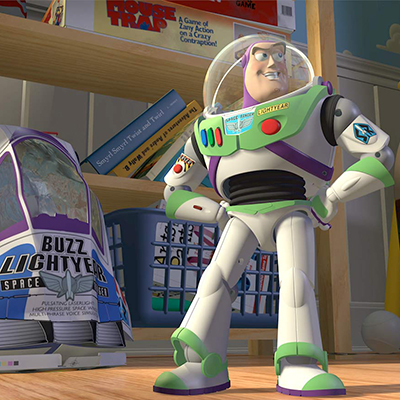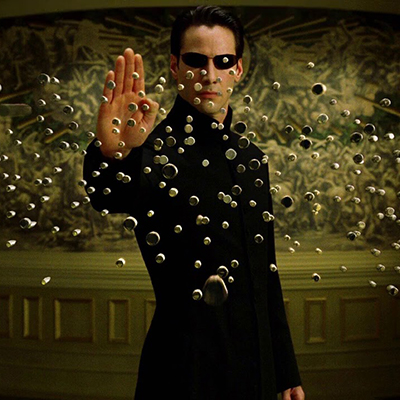The digital entertainment landscape, which encompasses cinema and gaming, is defined by its painstaking dedication to crafting realistic scenes and engaging experiences. The production of these digital products often necessitates immense effort, a considerable budget, and an unwavering commitment to realism.
This dedication to authenticity is not arbitrary but a fundamental requirement to capture the imagination of audiences and ensure substantial box-office returns. The magic of the cinema and the immersive gaming experience are both testament to the industry’s creativity, facilitated by the deployment of numerous techniques to create visual effects that delight viewers and players alike. However, amidst the myriad of methods employed, one stands above all as the most widely utilized in any high-profile project.
In fact, CGI, or Computer-Generated Imagery, is the secret weapon of the entertainment industry. It’s the unique blend of artistry and technology that breathes life into both the monumental blockbusters we indulge in and the addictive video games we can’t seem to put down. Central to this is CGI animation, which, in essence, is the process of creating moving images in a digital environment. This technique has transformed the way visual stories are told, and it’s crucial to the highest quality 2D and 3D animation services.
What Is CGI Animation? — Main Principles
For those less familiar with the concept, the query “What is CGI?” is more than legitimate. At its core, CGI is the use of computer graphics to create or contribute to images in art, printed media, video games, films, television programs, commercials, simulators, and many other forms of media. Even though CGI is omnipresent today, it wasn’t always the case.
Understanding the progression of this field necessitates diving into its origins, into the first CGI. The birth of computer-generated imagery can be traced back to the 1960s, with the introduction of 2D visual simulations. Its evolution, however, accelerated with the advent of 3D graphics in the late 1970s and early 1980s, making way for the realistic and immersive media we are accustomed to today.
CGI animation, in particular, has become a mainstay of modern visual media. The fusion of traditional artistry with digital innovation allows creators to devise scenes and characters that surpass the limits of physical reality, opening up a world of unparalleled creativity and imagination. CGI animation provides the tools to shape and transform ideas into visually stunning narratives that resonate with audiences worldwide.
Through the integration of CGI in 2D and 3D animation services, creatives in the entertainment industry are granted a level of control over their previously unimaginable projects. From depicting alien landscapes to mythical creatures, CGI allows the impossible to be realized with striking realism. Its versatile application in both 2D and 3D animation also underlines the importance of understanding and mastering the essence of this revolutionary technology.
As we continue to enjoy the fruits of this technological marvel, we gain a deeper appreciation for the complexities behind the scenes. An understanding of CGI, its history, and its application in CGI animation, are essential to grasp the enormous potential of modern digital storytelling fully. CGI, after all, isn’t just a tool for creating impressive visuals — it’s the magic that brings our wildest imaginations to life.
Since CGI animation is a part of the VFX (visual effects) field, specialists also create impressive explosions, transformations, weather effects, and the like. In addition, the scenes don’t have to be ultimately computer generated. On the contrary, this technique looks most effective in combination with the actual actors and environment.
The Milestones of CGI Animation in Entertainment
The entertainment industry has witnessed significant revolutions over the years, and a crucial part of this evolution is Computer-Generated Imagery. CGI, as its name suggests, is the use of computer graphics to create or contribute to images in various media forms. It’s the magic behind the scenes that breathes life into our beloved characters and epic landscapes in films and video games. To appreciate the complexity and significance of CGI animation, it is essential to revisit the question: “What is CGI?” and explore its evolution over the years.
Primarily, we need to go back in time to the inception of CGI. The first CGI was a two-dimensional image developed in the 1960s. This marked the genesis of a technology that would later revolutionize how we consume media. From simple 2D images, we’ve now ventured into creating 3D graphics and realistic simulations, thanks to the continuous evolution of CGI.
The emergence of CGI animation represented a leap forward in the entertainment industry. Essentially, CGI animation involves generating animated images using computer software, thereby creating scenes that are either hard or impossible to film using traditional methods.
To fully appreciate the power and impact of CGI animation, it is valuable to review some notable examples:
Toy Story

Pixar’s beloved classic, Toy Story, was the first feature-length film entirely animated using CGI. Its success set a new standard for animation and solidified CGI’s place in the industry. This masterpiece pushed the boundaries of creativity, appealing to both young and old with its compelling story and delightful characters. Its sophisticated use of 3D technology expanded the art of animated storytelling and laid the groundwork for future animations.
The Matrix

The Matrix introduced groundbreaking visual effects with its ‘bullet time’ sequence. The film cleverly used CGI animation to create a unique visual experience, resulting in a shift in how action sequences were filmed. This innovative use of technology elevated the cinematic landscape, with the film’s special effects department creating a visually stunning and mind-bending universe. The blend of traditional filming with CGI paved the way for a new era in film production.
Avatar
![]()
James Cameron’s Avatar pushed the boundaries of CGI animation, creating an immersive alien world and lifelike characters. It showcased the full potential of CGI in creating hyper-realistic environments and characters. This cinematic titan transformed the way audiences perceive on-screen reality, asteam utilized cutting-edge technology to generate an entirely new world. The film’s ability to create such detailed extraterrestrial elements made it a game-changer in VFX.
From the first CGI to the modern applications of technology, CGI animation has continually raised the bar for visual effects in the entertainment industry. Each evolution has brought us closer to reality, blurring the lines between what’s real and what’s generated.
Beyond the world of cinema, CGI animation has found applications in video games, providing gamers with immersive experiences closer to reality. Game franchises like The Witcher, Assassin’s Creed, and Final Fantasy have leveraged CGI animation to create stunning visual experiences, transporting players to different worlds.
As a result, answering “What is CGI?” involves understanding its roots and how it has evolved over the years. From the first CGI that introduced 2D visual simulations to the sophisticated CGI animation that crafts lifelike 3D realities, CGI has changed the face of entertainment. As technology continues to advance, we can anticipate that CGI animation will continue to redefine the boundaries of our imagination, bringing even more exciting and immersive experiences to the big screen and beyond.
The Primary Types of CGI Animation
The world of entertainment and visual media is teeming with intricate and dynamic elements, many of which owe their existence to the marvels of technology. Central to these technological advancements is CGI. But one might ask, “What is CGI?” Simply put, CGI is a powerful tool that employs computer graphics to create or contribute to images in various forms of media. It serves as the backbone for many aspects of visual content creation, encompassing everything from static images to interactive visuals and, most notably, CGI animation.
Understanding the essence of CGI animation involves appreciating the array of techniques and approaches that vary according to the specifics of a project and its unique style. These methodologies aren’t interchangeable but are meticulously chosen to best align with the project’s vision, narrative, and aesthetic expectations. They serve as the core determinants in bringing the director’s vision to life, sculpting the raw digital clay into a form that resonates with the audience’s expectations and emotions.
The first CGI used in films was rather rudimentary compared to the complex visuals we are accustomed to today. It served as a proof of concept, a beacon showing what was possible in the realm of digital visuals. From the first CGI, which was a humble 2D image, we have evolved into creating intricate 3D visuals, a testament to the rapid evolution of CGI and its impact on the entertainment industry.
In CGI animation, two primary types dominate the scene, each contributing to the creation of remarkable content. These types are carefully selected based on the project’s specific needs and the vision the creators aim to portray. Diving into these types, we understand the breadth and depth of options available in the animator’s toolkit.
-
Keyframe animation. This traditional form of animation involves the animator manually setting the positions or ‘keyframes’ of an object at specific points in time. The software then interpolates the movement between these keyframes, creating a smooth transition. This type of CGI animation is particularly useful in projects that require fine control over the object’s movement and appearance.
-
Motion capture. In contrast to keyframe animation, motion capture involves recording the movements of a live actor and using this data to animate a digital character. This technique is preferred when human-like movements and realistic expressions are desired, often seen in high-budget films and video games.
The choice between these CGI animation techniques depends heavily on the project’s needs and the desired result. As technology continues to evolve, so does the intricacy and realism achievable through CGI. From the first CGI to the spectacular displays we witness today, CGI animation has paved the way for a new era of digital storytelling, pushing the boundaries of imagination and bringing our wildest fantasies to life. But aside from keyframe animation and motion capture, the classification goes even further — revolving around the dimensions.
2D CGI Animation
In visual storytelling, the innovation brought forth by CGI has dramatically revolutionized the landscape. CGI, the process of creating still or animated visual content with computing software, has transformed the approach to content creation in film, gaming, advertising, and many other industries. Despite its ubiquity in today’s digital era, understanding the evolution of CGI, from the first CGI to contemporary CGI animation, is integral to appreciating the breadth and depth of its impact.
Historically, 2D animation was performed with traditional techniques, utilizing tangible tools and props to bring hand-drawn scenes to life. The advent of CGI, however, has substantially redefined this practice. Today, 2D CGI animation dominates, marrying the charm of two-dimensional visuals with the power and versatility of modern software applications. This digital revolution has shifted the paradigm from physical to digital, opening a world of creative possibilities and efficiencies in the process.
State-of-the-art applications such as Photoshop and Sketchbook are now at the forefront of this 2D animation revolution. These software tools provide specialists with a rich suite of capabilities, facilitating easy drawing, precise editing, and seamless animation. Unlike the painstaking process of traditional hand-drawn scenes, CGI animation harnesses the power of these applications to create, modify, and animate content with relative ease and unprecedented control.
At the heart of this digital transformation is the technique known as skeleton animation. This method has supplanted the once-prevalent, time-consuming techniques of stop-motion and flipbook animation methods. In skeleton animation, there are:
-
Digital bones. Animators can create what is referred to as ‘digital bones.’ These form the skeletal framework of a character or an object, defining its structure and dictating its movement.
-
Influence zones. Once the skeleton is created, animators define the ‘influence zones,’ determining how different parts of the object or character deforms in response to the movement of the digital bones.
-
Animation controllers. Finally, animation controllers are set, which drive the movement of the digital bones and, in turn, animate the character or object.
This technique facilitates more control and flexibility, enabling animators to create more complex and dynamic movements. It is a testament to how CGI has enhanced the practicality and creative scope of animation.
From the first CGI, which marked the onset of digital visual content, to the modern techniques of 2D CGI animation, the evolution of CGI is a testament to technology’s transformative potential. As it evolves and matures, CGI will undoubtedly unlock newer possibilities, enabling storytellers to capture our imagination in ways never thought possible. Whether it’s breathing life into a character with skeleton animation or creating stunningly realistic environments, the miracle of CGI animation is only beginning to unfold.
3D CGI Animation
The world of CGI is a fascinating confluence of art, technology, and storytelling. CGI has ushered in a new era of visual content creation, offering creators the tools to mold their imagination into tangible digital experiences. From the first CGI, a simple two-dimensional image, the technology has progressed leaps and bounds into 3D CGI animation. This evolution has rendered a paradigm shift in the entertainment industry, allowing for the creation of immersive, captivating, and lifelike visual narratives.
Creating a 3D CGI animation involves an intricate tapestry of processes, each requiring a high level of precision and expertise. Specialists proficient in the field navigate a multitude of complex steps to translate their visions into awe-inspiring scenes that captivate audiences worldwide.
The journey commences with the development of 3D models using advanced software applications such as Unity, Unreal Engine, and 3Ds Max. One of the critical techniques employed at this stage is polygonal modeling. This process involves creating a three-dimensional structure of an object using a mesh of polygons. Each polygon serves as a piece in the larger puzzle, and when pieced together meticulously, they form a volumetric representation of the object. This aspect of CGI animation is akin to assembling a 3D puzzle, albeit guided by precise mathematical calculations.
Once the 3D model is developed, the next step in the CGI animation process involves texture creation. 3D artists painstakingly design textures and wrap these around the CG models, striving to lend a natural, realistic look to their surfaces. Here, an array of elements come into play:
-
Surface detailing. The detailing on a surface can significantly enhance its believability. From the grain of a wooden table to the wrinkles on an aged face, intricate details can profoundly enrich the visual experience.
-
Lighting effects. Subtle lighting effects can make a world of difference, affecting the perceived texture and color of the model.
-
Final edits. Before moving to animation, the model undergoes final adjustments, tweaking any aspects that do not align with the intended look and feel.
With the model refined to perfection, the stage is set for animating it into life. Techniques such as rigging and skinning come into play here, especially for 3D characters. Rigging involves creating a skeleton (digital bones and joints) for the model, while skinning attaches the model’s mesh to this skeleton. This approach allows for realistic imitation of movements, bringing the 3D models to life.
From the first CGI to today’s intricate 3D CGI animations, the evolution has been nothing short of spectacular. Based on our research, as technology advances, so will the methods and techniques employed in CGI animation, pushing the boundaries of visual storytelling and offering audiences increasingly immersive experiences.
CGI Animation Examples and Use Cases
Whether we realize it or not, CGI animation is all around us, from entertainment to shopping fields. In case you still can’t imagine what CGI animation is used for, we’ve prepared the list of top 3 industries implying the constant use of this animation type.
Filmmaking
The captivating narratives and audacious concepts that drive today’s film industry would be near impossible to execute without the magic of CGI. This transformative tool of CGI animation brings to life the fantastical creatures and awe-inspiring effects that dominate our screens, providing a sense of realism unattainable through traditional methods.
Indeed, recreating such intricate elements on physical sets would not only require a staggering budget running into millions of dollars, but it would also fail to capture the realism that CGI effortlessly delivers. The power of CGI lies in its ability to blend digital elements seamlessly with actual actors and environments, a feat achieved so meticulously that audiences often find it hard to distinguish the real from the rendered.
A striking example of the prowess of CGI and CGI animation lies in the realm of creating photorealistic animals. Have you ever marveled at the stunning representation of CGI animals on the big screen and pondered their creation process? The widely acclaimed 2016 movie, The Jungle Book, is a case in point. The film presents a mesmerizing array of animals, from tigers to snakes, all displaying an uncanny resemblance to their real-world counterparts. Not only do these CGI animals embody the physical attributes of the species they represent, but they also exhibit human-like expressions and behaviors.
Achieving this level of realism through CGI animation is no small feat. It involves an intricate process where CGI artists must first thoroughly study the anatomy of each species, creating lifelike skeletons and intricate textures that mimic actual fur or leather. Simultaneously, they must master the subtle nuances of the animal’s facial expressions and body movements, drawing inspiration from real-world references.
This painstaking attention to detail, combined with the unbridled power of CGI, results in characters that not only look real but also feel real. As the digital creatures in The Jungle Book demonstrate, the outcome is truly spectacular, rendering the movie an iconic representation of the capabilities of CGI animation.
Gaming
The dynamic world of video game creation is one of intricate artistry, employing a blend of sophisticated technology and imaginative design. The critical role of computers and specialized software cannot be overstated, regardless of whether the project is rooted in 2D or 3D environments. With the power of CGI and CGI animation, game artists are able to construct a broad spectrum of visual elements — from captivating characters to immersive environments.
The process typically involves game engines like Unity and Unreal Engine or various software applications tailored for each stage of game production. Once the foundational content is meticulously crafted, it’s augmented by breathtaking gaming VFX and animation. This embellishment process involves the application of specific techniques that inject life and motion into static game elements, enriching the overall visual experience.
A compelling illustration of the prowess of CGI animation in video game design is found in the critically acclaimed game Detroit: Become Human. The game’s lifelike characters and realistic movements were achieved through the innovative motion capture technique (mocap). In this process, the appearances of real actors were used as templates for the game characters, with the actors performing all movements on sets.
Their facial expressions and body movements were captured and recorded, then transferred into the virtual world using CGI. This blending of human performances with the digital world lends an impressive realism to the game, making it a sterling example of how CGI and CGI animation can enhance the gaming experience.
The role of CGI in the gaming industry extends beyond mere aesthetics. It’s a vital component that powers modern games’ interactive and immersive nature, transforming them into dynamic realms of digital artistry. The ongoing evolution of CGI and CGI animation, combined with game artists’ boundless creativity, continues redefining virtual reality’s limits, promising an increasingly immersive and engaging future for the gaming community.
Marketing
Modern product promotion has dramatically evolved from the simplistic combination of photographic presentations and textual descriptions on a website. Today’s marketing landscape is dominated by visually rich and conceptually innovative projects that leverage the power of CGI animation, exceptional graphic design, and persuasive audio narratives. But what is CGI animation, and how has it reshaped the face of contemporary marketing?
At its core, the CGI animation definition encapsulates the use of computer software to generate a sequence of images, which when displayed in rapid succession, create the illusion of motion. This powerful tool has been instrumental in transforming static product images into dynamic visual narratives that can captivate and influence prospective consumers.
Recent research underscores the efficacy of this approach, with 84% of surveyed individuals reporting that they were persuaded to purchase a product or service after viewing a brand’s video content. This underscores the significance of how to make CGI animation a core element of a company’s marketing strategy.
A case in point is the tech giant Apple, whose use of CGI animation in product marketing has been notably successful. The company’s production devices, from smartphones to laptops, are routinely showcased in impressive commercials. Each ad is a testament to the power of CGI, with creative plots that highlight the features of their gadgets in engaging and visually arresting ways.
Based on our observations, the usage of CGI and CGI animation in these commercials not only helps to differentiate Apple’s products in a saturated market but also fosters a deeper emotional connection with potential customers. These dynamic and interactive presentations capture attention, stir curiosity, and ignite the imagination, resulting in a marketing message that is both memorable and persuasive.
Get the Most Out of CGI Animation with 3D-Ace
Do you need to fill your project with impressive and realistic content? Then 3D-Ace, an experienced CGI animation agency, is ready to give you its helping hand. With our all-in-one services, you can get any kind of visualization you need, from striking game characters to product and architectural animation.
In addition, you are welcome to choose a partnership format that suits your company better.
- Outsource the whole project either under our management or run it by yourself.
- Rely on our resources or hire our dedicated specialists for your working environment.
- Choose a flexible business model based on precious time and material estimates.
Contact us to learn more about new opportunities for your company.










